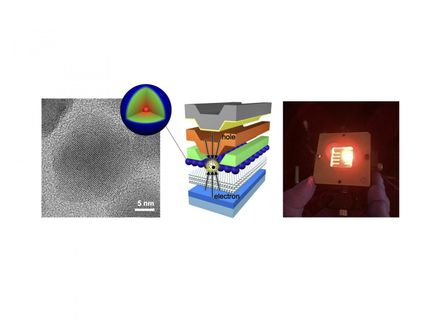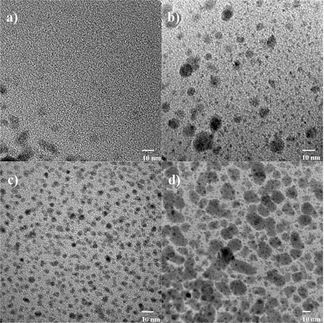Two in one solution for low cost polymer LEDs and solar cells
Considerable improvement in device performance of polymer-based optoelectronic devices is reported by researchers from Ulsan National Institute of Science and Technology (UNIST), South Korea. The new plasmonic material, can be applied to both polymer light-emitting diodes (PLEDs) and polymer solar cells (PSCs), with world-record high performance, through a simple and cheap process.
The contrary demands of these devices mean that there are few metal nanoparticles that can enhance performance in PLEDs and PSCs at the same time.
Most semiconducting optoelectronic devices (OEDs), including photodiodes, solar cells, light emitting diodes (LEDs), and semiconductor lasers, are based on inorganic materials. Examples include gallium nitride for light-emitting diodes and silicon for solar cells.
Due to the limited availability of raw materials and the complex processing required to manufacture OEDs based on inorganic materials, the cost of device fabrication is increasing. There is great interest in thin-film OEDs that are made from alternative semiconductors.
Among these materials, organic semiconductors have received much attention for use in next-generation OEDs because of the potential for low-cost and large-area fabrication using solution processing.
Despite extensive efforts to develop new materials and device architectures enhancing the performance of these devices, further improvements in efficiency are needed, before there can be widespread use and commercialization of these technologies.
The material prepared by the UNIST research team is easy to synthesize with basic equipment and has low-temperature solution processability. This low-temperature solution processability enables roll-to-roll mass production techniques and is suitable for printed electronic devices.
“Our work is significant also because it anticipates the realization of electrically driven laser devices by utilizing carbon dot*-supported silver nanoparticles (CD-Ag NPs) as plasmonic materials.” says said Prof. Byeong-Su Kim. “The material allows significant radiative emission and additional light absorption, leading to remarkably enhanced current efficiency.”
Surface Plasmon resonance is an electro-magnetic wave propagating along the surface of a thin metal layer and the collective oscillation of electrons in a solid or liquid stimulated by incident light. SPR is the basis of many standard tools for measuring adsorption of materials onto planar metal (typically gold and silver) surfaces or onto the surface of metal nanoparticles.
The team demonstrated efficient PLEDs and PSCs using surface Plasmon resonance enhancement with CD-Ag NPs. The PLEDs achieved a remarkably high current efficiency (from 11.65 to 27.16 cd A-1) and luminous efficiency (LE) (from 6.33 to 18.54 lm W-1).
PSCs produced in this way showed enhanced power conversion efficiency (PCE) (from 7.53 to 8.31%) and internal quantum efficiency (IQE) (from 91 to 99% at 460 nm). The LE (18.54 lm W-1) and IQE (99%) are among the highest values reported to date in fluorescent PLEDs and PSCs, respectively.
“These significant improvements in device efficiency demonstrate that surface Plasmon resonance materials constitute a versatile and effective route for achieving high performance polymer LEDs and polymer solar cells,” said Prof. Jin Young Kim. “This approach shows promise as a route for the realization of electrically driven polymer lasers.”
Original publication
Other news from the department science

Get the chemical industry in your inbox
From now on, don't miss a thing: Our newsletter for the chemical industry, analytics, lab technology and process engineering brings you up to date every Tuesday and Thursday. The latest industry news, product highlights and innovations - compact and easy to understand in your inbox. Researched by us so you don't have to.



























































